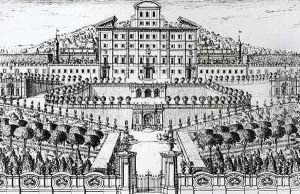Alessandro Spechi Paintings
Alessandro Specchi was an Italian architect and engraver, born in 1660 in Rome, Papal States (now Italy). He was recognized for his contributions to the architecture of Rome in the late 17th and early 18th centuries, during a period that followed the Baroque era, transitioning toward the Rococo and Neoclassicism.
Specchi's architectural training is not thoroughly documented, but it is known that he was a student of Carlo Fontana, one of the most prominent architects of his time, and a successor to Gian Lorenzo Bernini. Under Fontana's guidance, Specchi acquired a solid foundation in the principles of Baroque architecture, which would later influence his own works.
Among Specchi's most notable works is the Porto di Ripetta, a baroque river port in Rome that was constructed to improve the infrastructure for transporting goods and people along the Tiber River. Unfortunately, this structure was demolished in the 19th century to make way for riverside embankments. Specchi also worked on the design of the Spanish Steps, another iconic Roman landmark, although the project was eventually realized by Francesco De Sanctis after Specchi's death.
In addition to his architectural work, Specchi was also an accomplished engraver. He produced a number of etchings that depicted both existing buildings and visionary architectural designs. These prints were highly regarded for their technical precision and artistic quality, and they contributed to the dissemination of Roman architectural ideas throughout Europe.
Specchi's work reflects the transition from the exuberant expressiveness of the High Baroque to a more restrained and elegant architectural style. His legacy is less about grand, individual monuments and more about his subtle influence on the urban fabric of Rome and the development of late Baroque and early Rococo architecture in Italy.
Alessandro Specchi passed away in 1724 in Rome. His contributions to architecture and engraving have ensured him a respected place in the history of Italian art, though he is not as widely recognized as some of his contemporaries. His works continue to be studied by scholars interested in the development of architectural style and urban planning in early 18th-century Rome.
